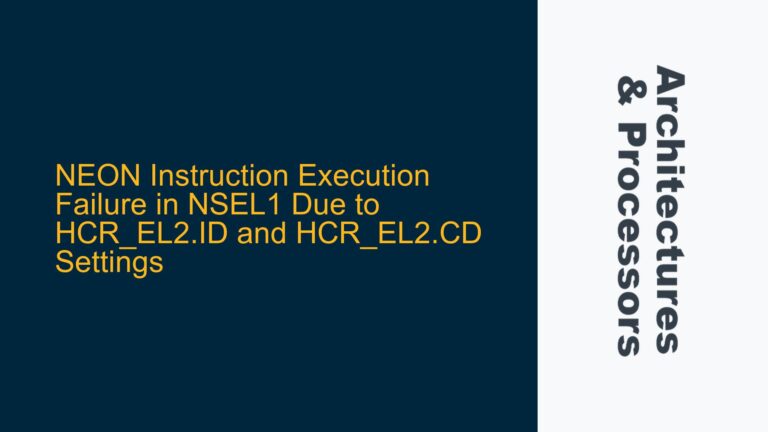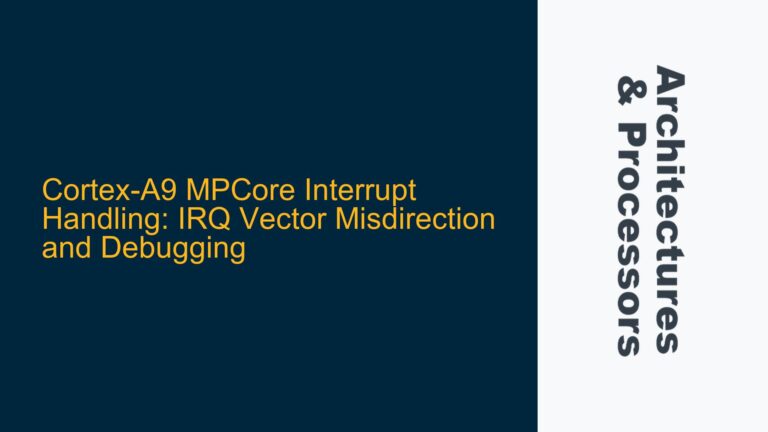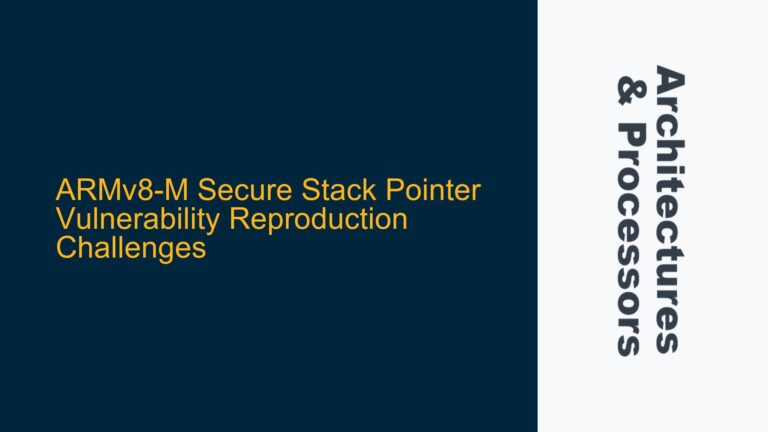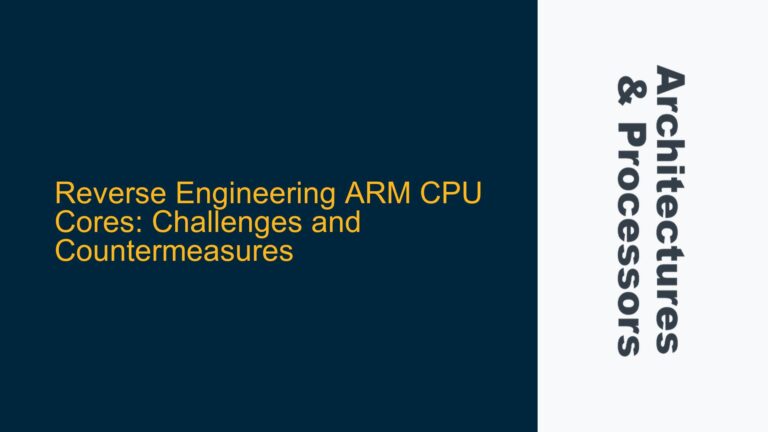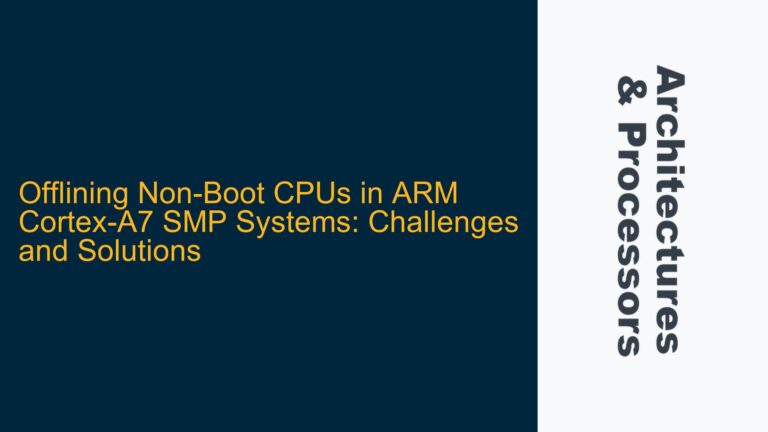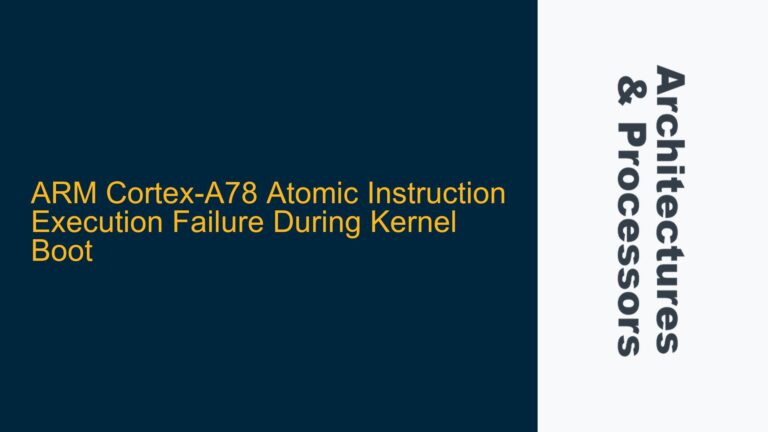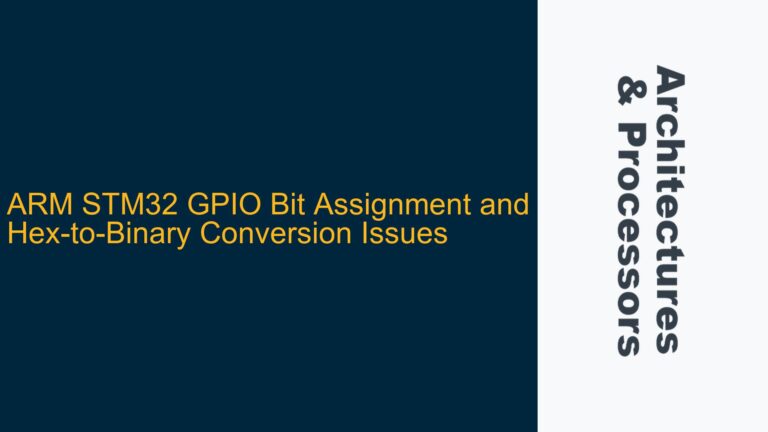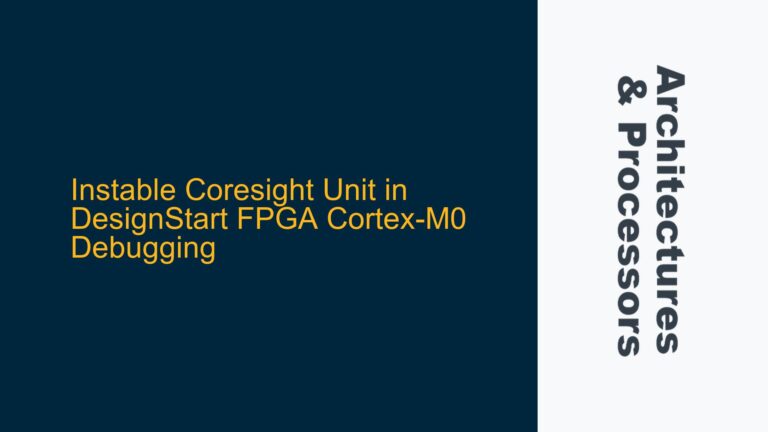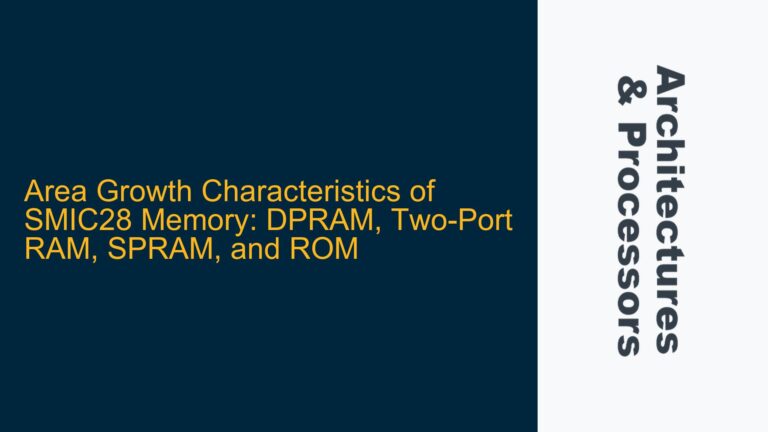NEON Instruction Execution Failure in NSEL1 Due to HCR_EL2.ID and HCR_EL2.CD Settings
NEON Instruction Execution Failure in NSEL1 with HCR_EL2.ID and HCR_EL2.CD Set to 1 The core issue revolves around the failure of NEON instructions to execute in Non-Secure EL1 (NSEL1) when the HCR_EL2 register’s ID (Instruction Cache Disable) and CD (Data Cache Disable) bits are both set to 1. Specifically, the NEON instruction str q0, [x1,…
